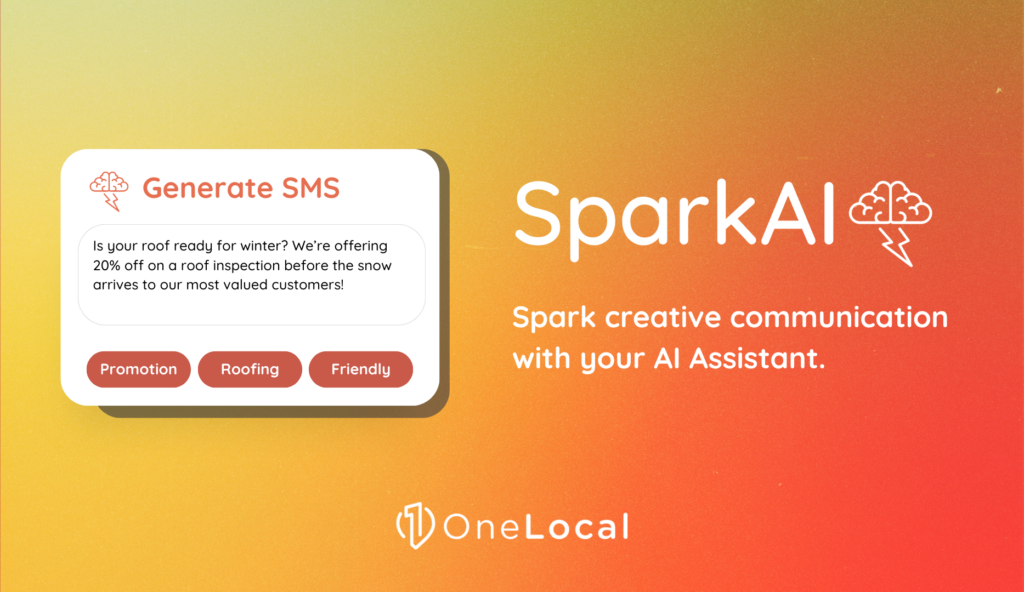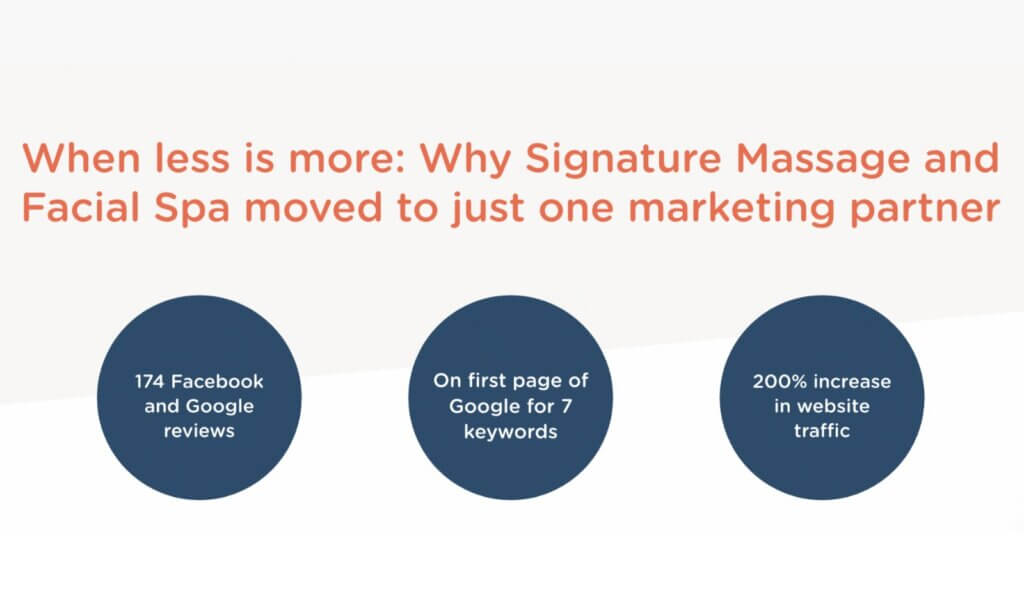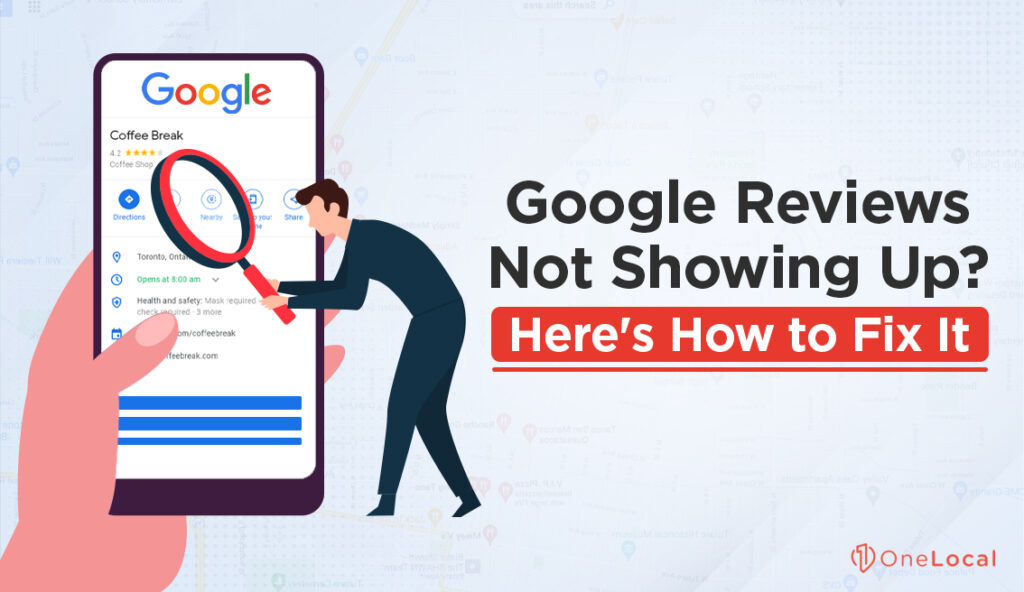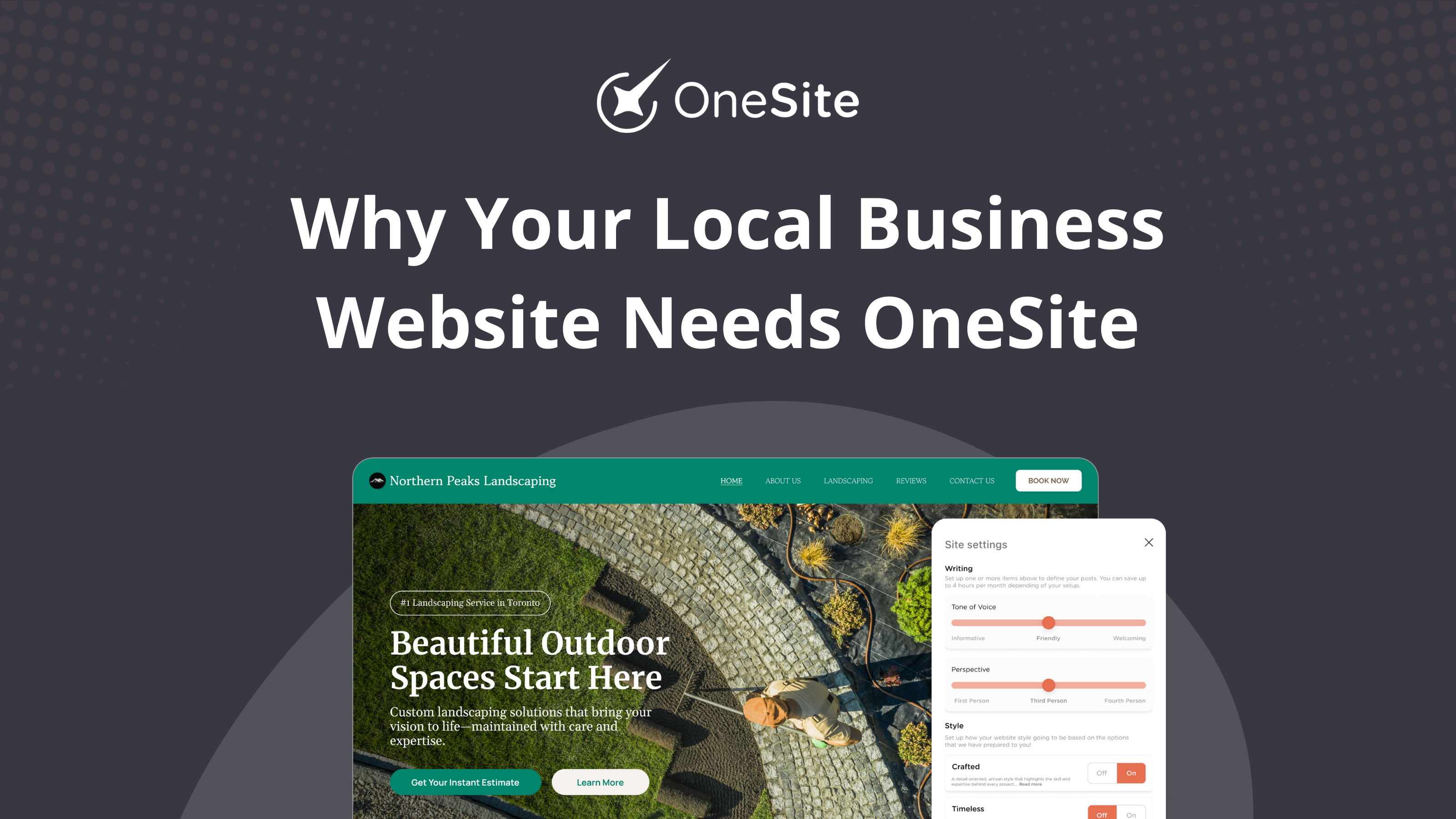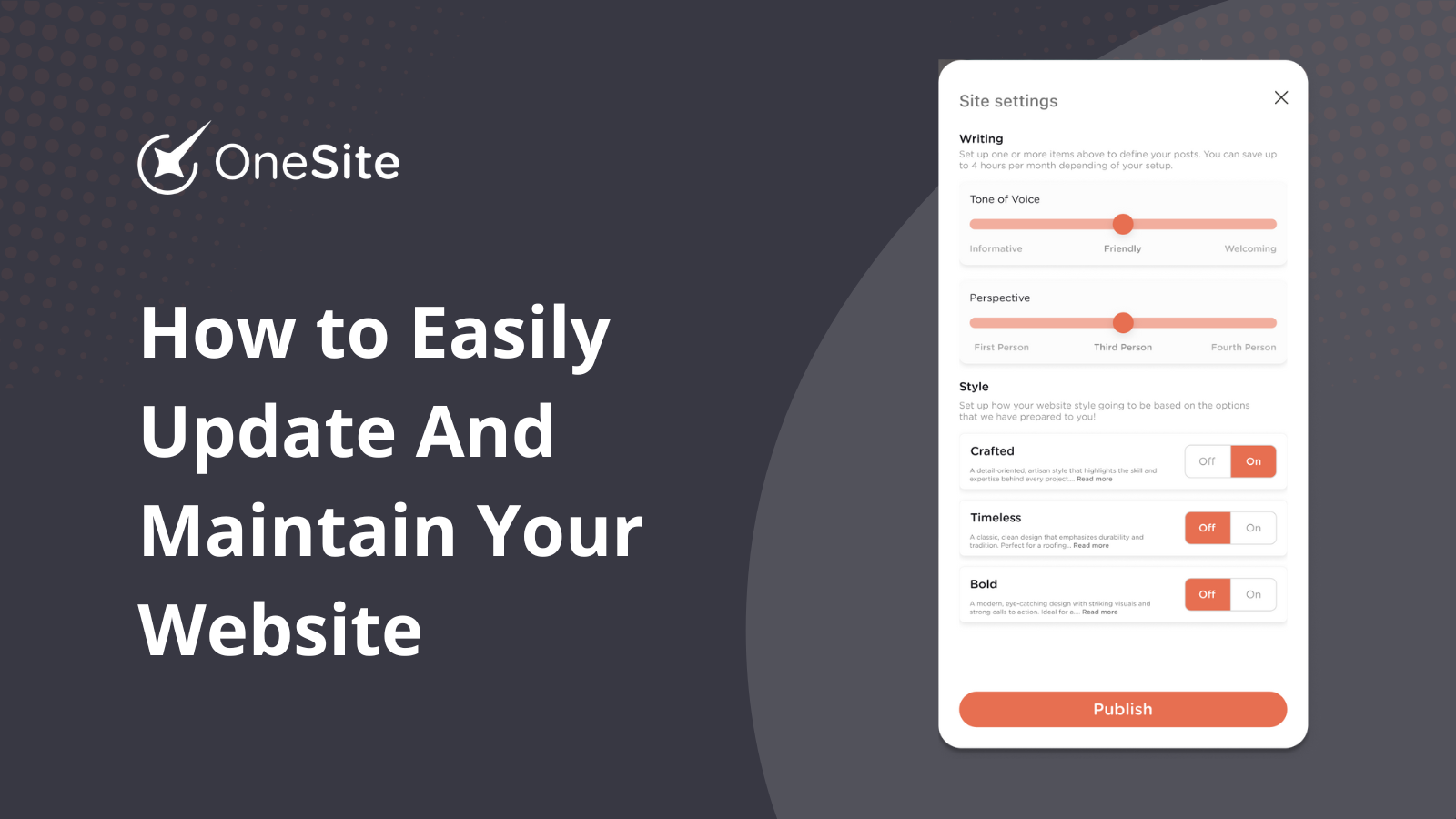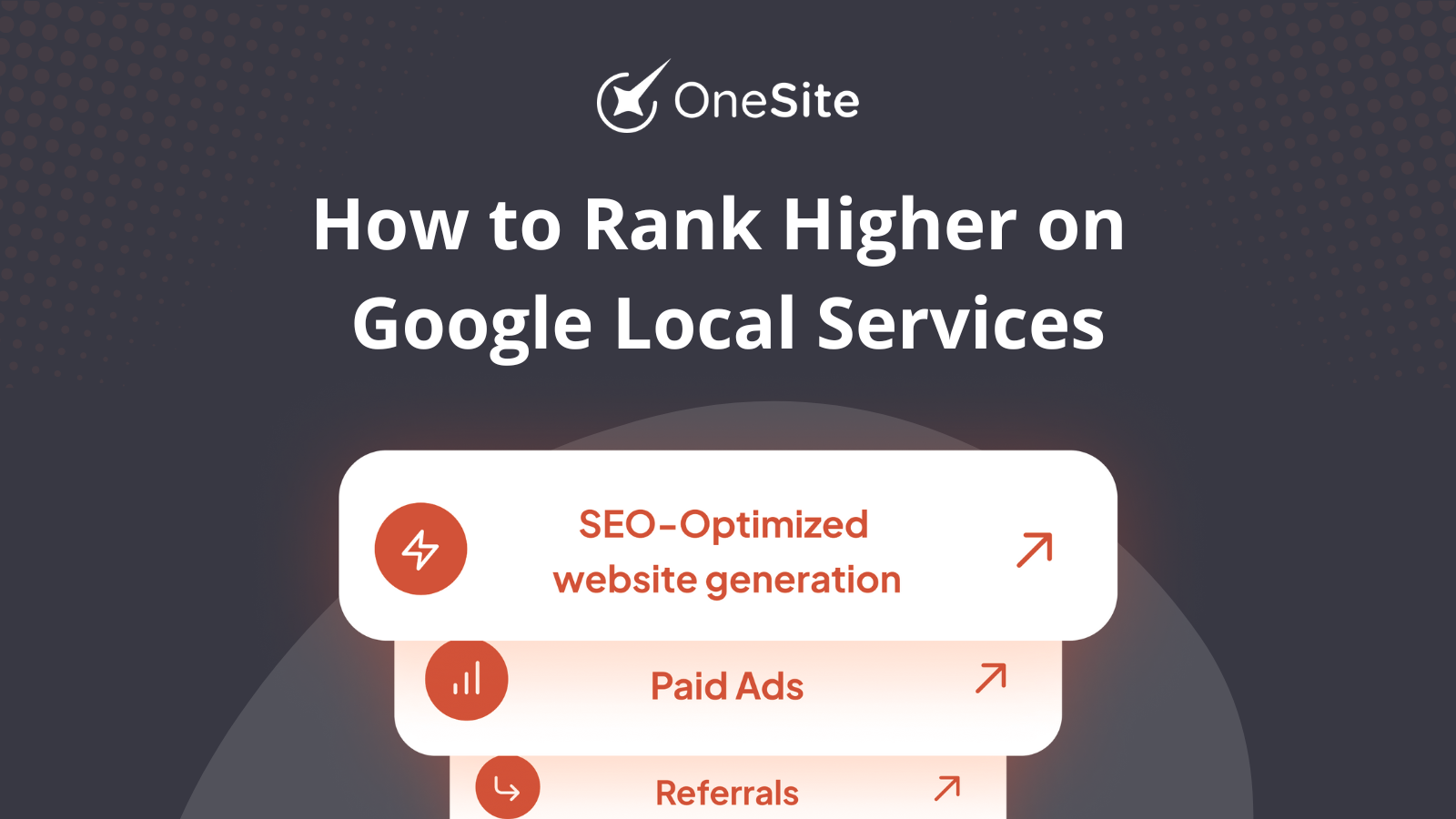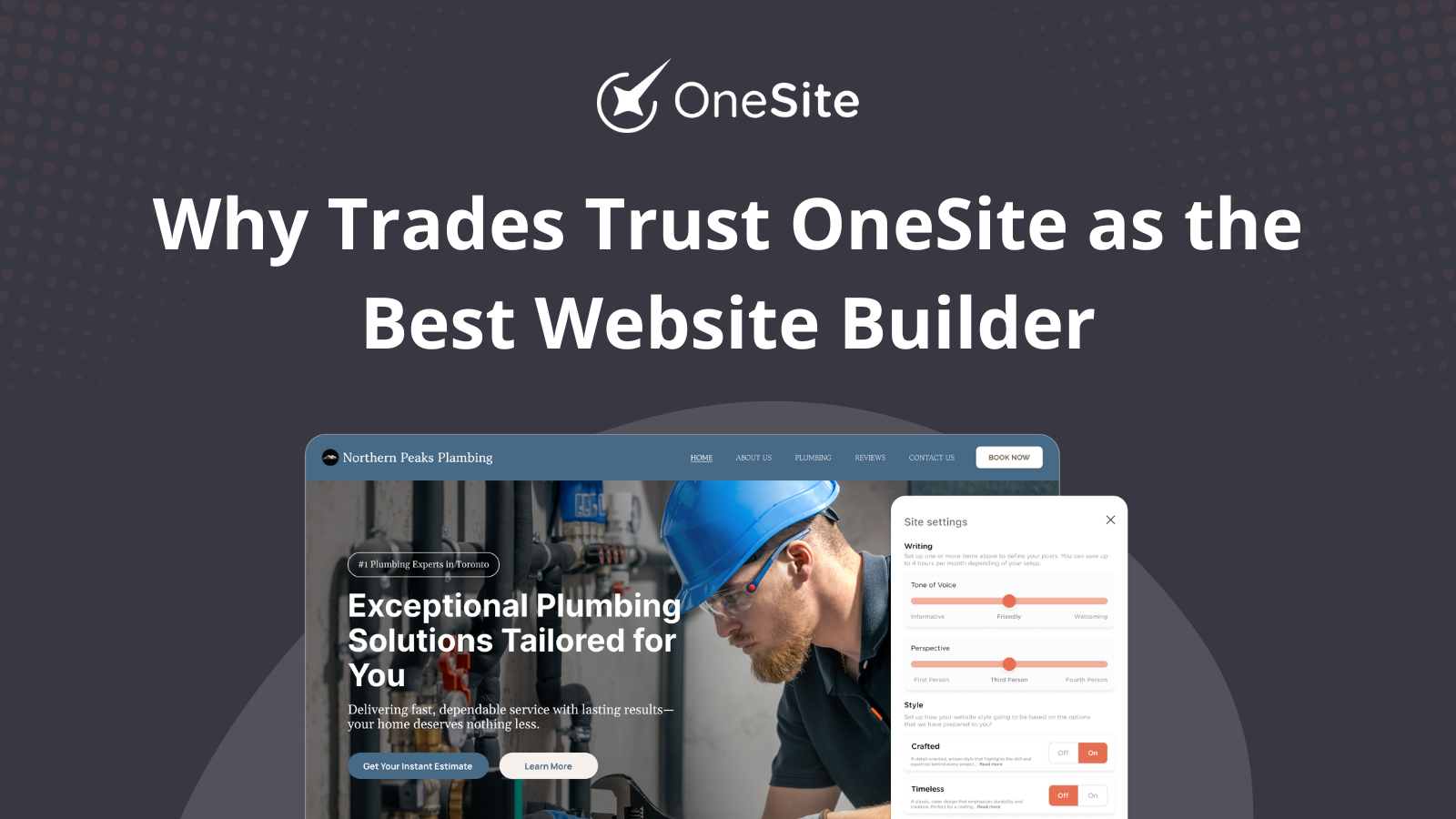In 2025, your website isn’t just a formality. It’s your storefront, your first impression, and more often than not, your deciding factor. Whether a property owner is looking for a plumber to handle a leak, a painting contractor to refresh their home’s exterior, or any other local service provider — the journey begins online with a website that builds trust and clearly communicates value. And whether you win or lose that customer often depends on what happens in the first few seconds.
Not what you say. Not how long you’ve been in business. But how fast your site loads, how clear the message is, how confident and professional it looks, and most importantly: how easy it is to take action.
This is where too many service businesses get stuck. Outdated websites, generic templates, pages that crawl on mobile, sites that are impossible to update without a developer. Not only do these issues undermine your credibility, they quietly push potential customers toward competitors with more professional online experiences.
However, the good news is: you’re not without options. This article outlines what a high-performing local business website now requires, and how to get there efficiently, without wasting time or resources on fragmented tools or outdated approaches.
The Core Capabilities Every Local Business Website Needs to Compete in 2025
Every website includes features. And among all the possibilities, there are a few that consistently matter most, especially for trades and service businesses. These aren’t add-ons or secondary considerations. They’re the core functions that influence whether a potential customer trusts your business, engages with your content, and ultimately reaches out.
1. Search Visibility That’s Built In
If your website isn’t showing up on Google when someone searches for your services in your area, everything else is irrelevant. Local SEO today means more than adding keywords. It requires clean site structure, fast load times, schema markup for services and locations, and seamless integration with your Google Business Profile.
Without these basics in place, your site won’t rank and potential customers won’t find you. You don’t need an SEO agency, you need a website that bakes best practices from the start.
2. Mobile-First Performance That Converts
Most of your customers are looking for you on their phones. Not on their laptop.
Your site should load quickly and display clearly on smaller screens. It should also make it easy for visitors to take action, whether that means calling, filling out a form, or booking a service. Simply being “mobile compatible” isn’t enough; your site should be built with a mobile-first mindset from the ground up.
If your layout is difficult to navigate on a phone or key actions like contacting you or booking aren’t immediately accessible, you’re likely losing business.
3. Real-Time Control, Without Developer Dependence
From updating business hours to posting seasonal offers to swapping out project photos, your website should keep up with your day-to-day operations. Too often, however, local business owners are stuck waiting for someone else to make simple updates, either because the platform is too complicated or because the person who built the site is no longer available.
That slows you down and creates bottlenecks. It also makes it harder to keep your online presence aligned with your actual business. In 2025, a modern website should put you in control. You should be able to log in, make changes in plain language, and publish updates on your own schedule — no developer or delays necessary.
This kind of flexibility isn’t just convenient; it’s essential. It ensures your site is accurate, your offers are current, and your customers are informed without adding another task to your to-do list.
4. Security, Speed, and Infrastructure — Fully Managed
Every reliable website relies on a set of technical systems that keep it fast, secure, and available at all times. This includes SSL encryption, global content delivery, cloud-based hosting, uptime monitoring, daily backups, and ongoing software updates.
These features are not optional or secondary; they directly impact customer trust, search performance, and day-to-day reliability.
However, most platforms offload this responsibility to business owners, expecting them to manage plugins, troubleshoot issues, and oversee updates. For most service providers, that’s neither realistic nor sustainable.
In a modern setup, this infrastructure should be handled automatically and comprehensively so your website stays current, secure, and high-performing without requiring constant attention.
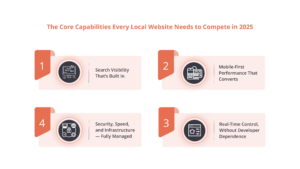
How OneSite Solves the Problem — Without Creating New Ones
Most website platforms provide a starting template and a set of basic tools, but then leave business owners to navigate a complex and fragmented ecosystem on their own. From configuring hosting environments to managing SEO best practices and troubleshooting performance issues, the burden falls entirely on you. This often leads to inconsistent quality, technical headaches, and lost opportunities for growth.
OneSite takes a fundamentally different, fully integrated approach tailored specifically to the needs of trades and local service businesses. Every critical capability is embedded in the platform from day one — eliminating the need for technical expertise, additional plugins, or juggling multiple disconnected tools.
- SEO and Local Visibility Built-In: OneSite automatically configures essential SEO elements, including optimized page titles, structured data (schema markup), and seamless syncing with Google Business Profiles. This ensures your site is well-positioned to capture valuable local search traffic without manual setup.
- Mobile-First, Performance-Optimized Design: Every site created through OneSite is designed with a mobile-first philosophy, guaranteeing fast load times and an intuitive user experience on smartphones, tablets, and desktops alike. This is critical in service industries where customers increasingly search and convert on mobile devices.
- Content Management for Non-Technical Users: OneSite’s content editor is purpose-built for ease of use, allowing you to update service descriptions, promotions, images, and contact information in straightforward language — no coding or technical skills required. This ensures your website content can evolve quickly and stay relevant.
- Fully Managed Hosting and Infrastructure: Hosting, SSL certificates, backups, security patches, and performance optimizations are all handled proactively and continuously by OneSite’s managed infrastructure. You don’t need to worry about technical maintenance or security vulnerabilities — it’s all taken care of, behind the scenes.
- AI-Powered Recommendations to Keep Your Website Fresh and Effective: OneSite uses advanced AI trained on millions of local data points and businesses like yours. It continuously monitors your site and provides clear, actionable tips, like updating services or seasonal messaging, so your website stays fresh and effective without extra effort.
Together, these features remove common roadblocks that frustrate SMB owners and operators, enabling your website to launch quickly, run reliably, and convert prospects into customers effectively. The platform’s ongoing maintenance and optimization mean your site remains current, secure, and performant long after launch — without adding to your workload.
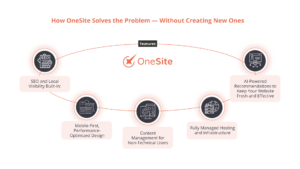
A Better Starting Point: Mood Board–Driven Design
Most website builders hand you a template and leave you guessing. OneSite takes a different approach. Every site starts with a mood board — a visual guide built around your trade, brand style, and service category. This helps shape a design that feels on-brand from day one, without requiring you to make dozens of design decisions.
By eliminating the need to make detailed choices about fonts, spacing, or colors, OneSite helps you focus on what matters: presenting your business professionally and authentically from day one — without the guesswork or overwhelm.
Fast to Launch. Built to Improve.
OneSite simplifies every step from launch to ongoing management:
- A guided onboarding process reduces friction and speeds your time to launch.
- Continuous automatic optimizations maintain peak performance and compliance behind the scenes.
- Hands-off maintenance includes SSL security and continuous performance monitoring.
With OneSite, your website simply works — consistently and effectively — so you can focus on growing your business confidently, knowing your digital presence is optimized and future-proofed.
A Better Local Business Website. A Smarter Way to Get There.
In 2025, your website should be a growth asset, not a drain on your time, budget, or patience. It should help customers find you, trust you, and take the next step. And it should do all of that without requiring technical know-how, design expertise, or a patchwork of third-party tools.
That’s what OneSite delivers.
By combining essential capabilities (from SEO to mobile design and maintenance, into a single, integrated platform) OneSite removes the complexity that holds so many businesses back. It’s not just about having a website. It’s about having the right website: one that’s fast to launch, easy to manage, and built to perform.

Whether you’re upgrading an outdated site or starting from scratch, OneSite gives you a smarter, more sustainable way to establish your business online, and keep it moving forward with the last website you’ll ever need. Learn more about OneSite here for you local business growth.

Rachel Solway is a seasoned marketing professional dedicated to empowering small businesses through innovative marketing strategies. With extensive experience at OneLocal, a leading marketing solutions provider, Rachel’s insights are helping thousands of local businesses navigate the digital landscape.

